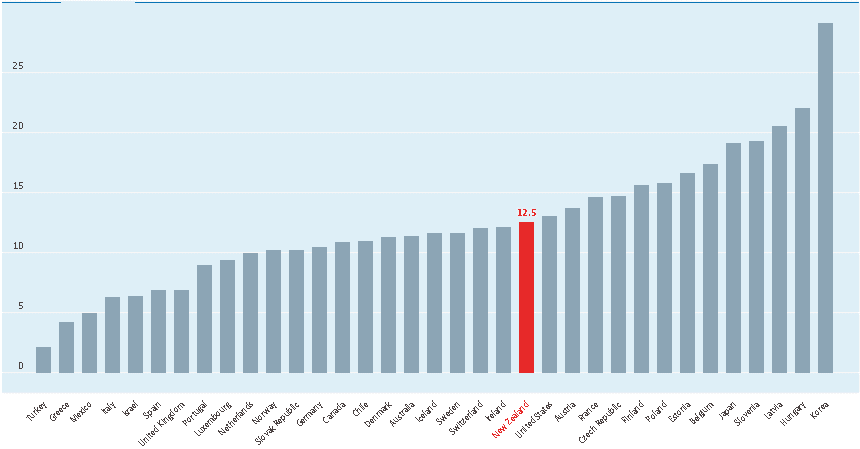Insurance cover and suicide rates
In his latest column Russell Hutchinson looks at the topical election issue of mental health and suicide rates and suggests some ideas for advisers to help them look after their clients.
Monday, September 11th 2017, 11:57AM  3 Comments
3 Comments
An evergreen election issue is health service provision, and this time around mental health services, and suicide prevention are particularly in the spotlight. New Zealand’s record isn’t great, but perhaps not quite as bad as sometimes suggested.
Looking at OECD data New Zealand sits about 24th out of 35 countries for the 2012-2015 with a rate per 100,000 of 12.5. That period was chosen because there is data for all members for that period. Recently it may have got a bit worse, but in 2009 in was slightly higher at 13.2 – a fact I note only because I last looked at this issue in detail back then.
That remains nothing to be satisfied with, and it gets worse when you look at the rate for youth. Earlier this year the BBC reported that New Zealand has the highest youth suicide rate in the developed world. “The rate of 15.6 suicides per 100,000 people is twice as high as the US rate and almost five times that of Britain”
The fact that around 600 people each year take their own lives is appalling. It is often pointed out: that’s higher than the road toll. You may wonder, though, if someone wishes to take their own life, can anything be done?
Well, the placement of 23 countries above us in that list suggests that there is a benchmark to aspire to. Interestingly, the UK’s rate of suicide is just 7.5 per 100,000. Substantially better than ours, and one of the lowest rates in the OECD. Frankly, I think life is better here, so maybe the folks in the UK know something about treating depression and other forms of mental illness that we don’t.
This matters for insurance. As other causes of death have progressively dropped over the last few decades, this is now a major contributor to early death. Also, insurers have tended to take something of a step back from this issue – several have issued new policies with longer suicide exclusions. Non-underwritten cover has tough exclusions that can last five years if there is no pre-existing mental illness, and may never pay if mental illness of some kind persisted throughout the policy.
What can you do?
Mental illness is an illness that can be covered, so don’t treat it as an exception – check whether it will be covered and consider its importance relative to accidents and cancer as a cause of early death that you want the policy to cover.
But also, recognising that we have a broad responsibility to our clients, if you are phoned out of the blue to check on whether suicide is excluded – help them to get help.

| « Nagging and the definition of ‘financial advice’ | Are you part of someone else’s plan? » |
Special Offers
Comments from our readers
Being a kind compassionate human doesn't cost you anything, but could mean the world and the rest of their life to someone else.
Sign In to add your comment
| Printable version | Email to a friend |



Well said, thank you. Adviser, client, friend or dirty flatmate we haven't heard from in years- sometimes we need to just forget the rest and reach out as a person when someone needs us.